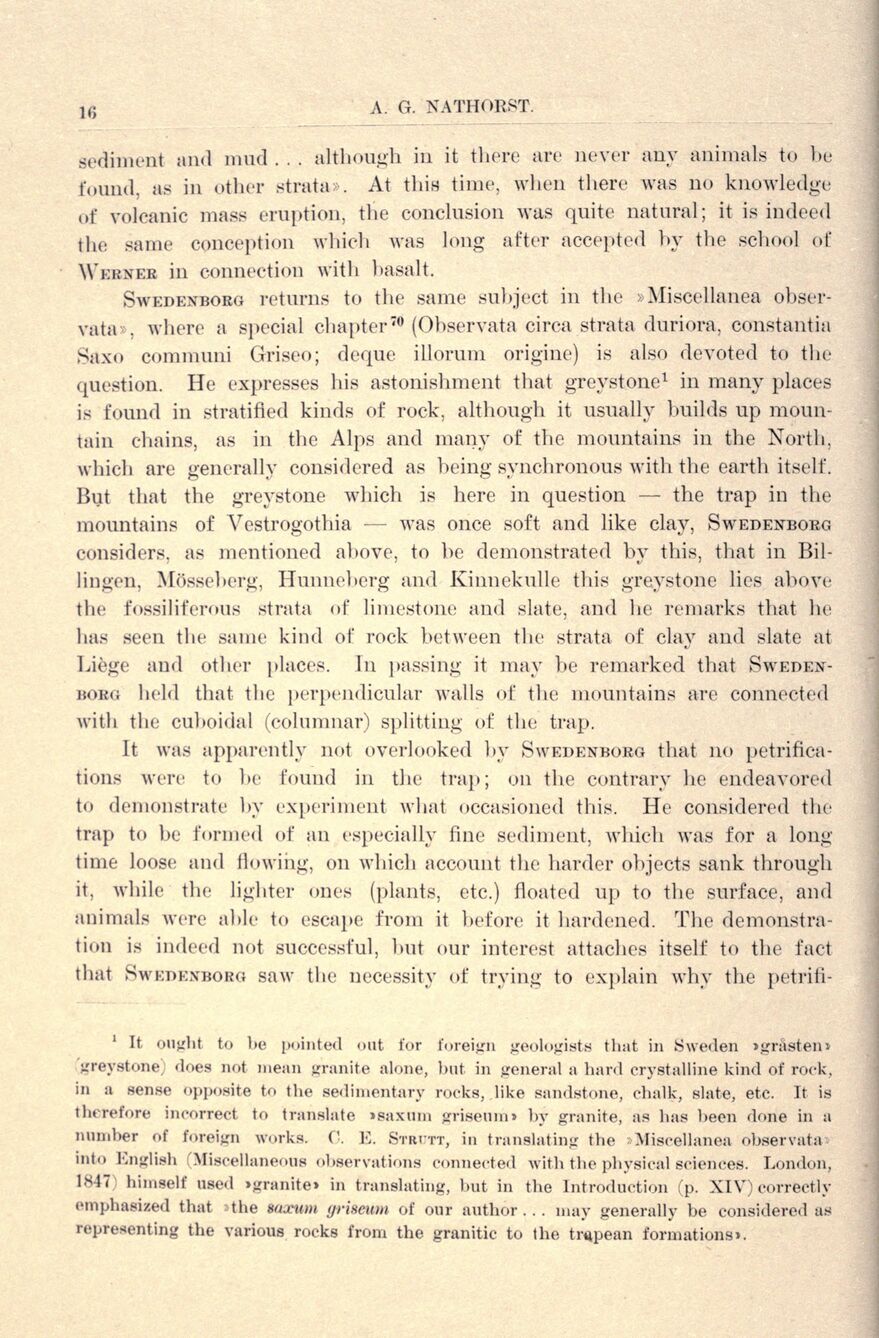
Full resolution (JPEG) - On this page / på denna sida - Sidor ...

<< prev. page << föreg. sida << >> nästa sida >> next page >>
Below is the raw OCR text
from the above scanned image.
Do you see an error? Proofread the page now!
Här nedan syns maskintolkade texten från faksimilbilden ovan.
Ser du något fel? Korrekturläs sidan nu!
This page has never been proofread. / Denna sida har aldrig korrekturlästs.
sediment and mud . . . although in it there ure never anv animals to >>e
found, as in ot her strata». At this time, when there was no knowledge
of volcanic mass eruption, the conclusion was quite natural; it is indeed
the same conception whicli was long after accepted by the school of
Werner in connection with basalt.
Swedenborg returns to the same subject in the »Miscellanea
obser-vata , where a special chapter70 (Observata circa strata duriora, constantia
Saxo communi Griseo; deque illorum origine) is also devoted to the
question. Ile expresses his astonishment that greystone1 in many places
is found in stratifled kinds of rock, although it usually builds up
moun-tain chains, as in the Alps and many of the mountains in the North,
which are generally considered as being synchronous with the earth itself.
But that the greystone which is here in question — the trap in the
mountains of Vestrogothia — was once soft and like clay, Swedenborg
considers, as mentioned above, to be demonstrated by this, that in
Killingen, Mösseberg, Hunneberg and Kinnekulle this greystone lics above
the fossiliferous strata of limestone and slate, and he remarks that lie
has seen the same kind of rock between the strata of clay and slate at
Liége and otlier places. In passing it may be remarked that
Swedenborg held that the perpendicular walls of the mountains are connected
with the cuboidal (columnar) splitting of the trap.
It was apparently not overlooked by Swedenborg that no
petrifica-tions were to be found in the trap; on the contrary he endeavored
to demonstrate by experiment wbat occasioned this. He considered the
trap to be formed of an especiallv fine sediment, which was for a long
time loose and flowiiig, on which account the harder objects sank through
it, while the lighter ones (plants, etc.) fioated up to the surface, and
animals were able to escape from it before it hardened. The
demonstration is indeed not successful, but our interest attaches itself to the faet
that Swedenborg saw the necessity of trving to explain why the petrifi-
1 It ought to 1 »e pointed out for fore i jr n geologists that in Sweden »gråsten»
greystone; does not mean granite alone, but in general a hard crystalline kind of rock,
in a sense opposite to the sedimentary rocks, like sandstone, chalk, slate, etc. It is
therefore incorrect to translate »saxum griseiun» by granite, as has been done in a
number of foreign works. C. E. Strctt, in translating the Miscellanea obser vat
a–into English (Miscellaneous observations connected with the pbysical Sciences. London,
1847) himself used »granite» in translating, but in the lntroduction (p. XIV) correctly
emphasi/.ed that »the saxum yriseum of our author . . . may generally be considered as
representing the various rocks from the granitic to the trgpean formations».
<< prev. page << föreg. sida << >> nästa sida >> next page >>